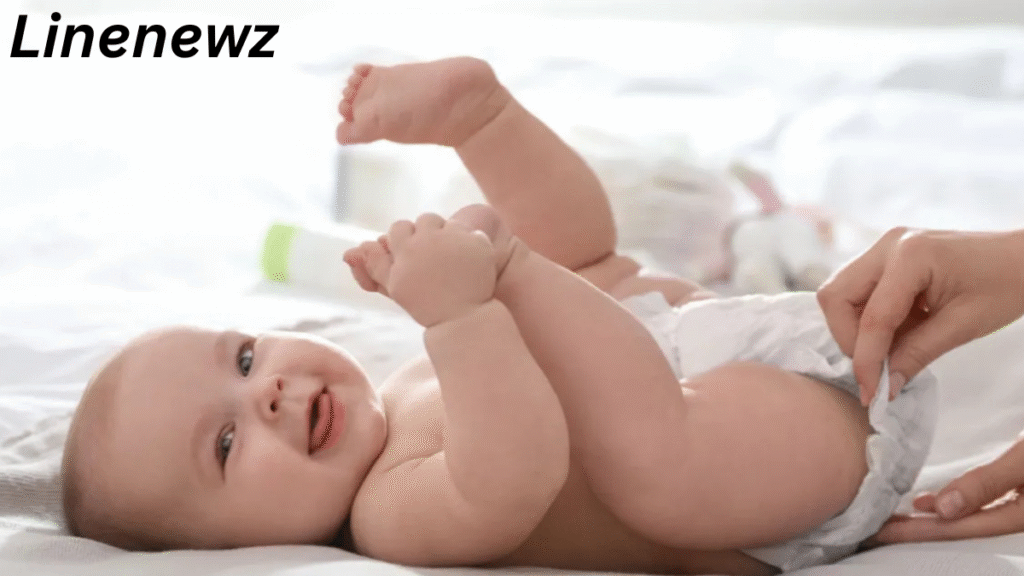Diapers play a vital role in early childhood, ensuring both cleanliness and comfort for infants and toddlers as part of daily care routines. Over the years, diapers have evolved significantly — from simple cloth wraps to high-tech, super-absorbent products designed to support healthy development and make parenting more manageable. Let’s explore the world of diapers, including their types, history, environmental impact, and future innovations.
What Are Diapers?
Diapers are specially designed absorbent garments used for babies and young children who haven’t yet learned to use the toilet independently. They are also used by individuals with certain medical conditions or disabilities. The primary function of a diaper is to contain urine and feces, keeping the wearer dry and preventing leaks.
Types of Diapers
There are two main types of diapers:
- Disposable Diapers
These are single-use diapers made from synthetic materials, including absorbent polymers, plastic backings, and non-woven fabrics. Disposable diapers offer exceptional convenience thanks to their simple application and reliable moisture absorption capabilities. Popular brands include Pampers, Huggies, and Luvs. - Cloth Diapers
Made from natural fabrics like cotton, bamboo, or hemp, cloth diapers are reusable and more eco-friendly. Modern cloth diapers often come with adjustable snaps, leak guards, and inserts for added absorbency. Though they require more maintenance (washing and drying), they are economical in the long run and reduce waste.
A Brief History
Diapering has been around for centuries, but the modern disposable diaper only emerged in the mid-20th century. Early diapers were made from linen, wool, or cotton wrapped and fastened with pins. The invention of the disposable diaper is credited to Marion Donovan in the late 1940s, and the first mass-produced version appeared in the 1960s. Since then, innovations in design and materials have made diapers more absorbent, leak-proof, and skin-friendly.
Environmental Concerns
While disposable diapers offer unmatched convenience, they also contribute significantly to landfill waste. It is estimated that a single child may use over 2,000 to 3,000 diapers per year, and disposable diapers can take hundreds of years to decompose. In response, many companies now offer biodegradable options or emphasize sustainable practices.
Cloth diapers, though requiring water and energy to wash, are often considered a greener choice if used and maintained properly.
Innovations and Trends
The diaper industry is constantly advancing, prioritizing improved comfort, enhanced safety, and eco-friendly solutions for modern parenting needs. Recent advancements include:
- Smart Diapers: Some high-tech models come equipped with sensors that notify caregivers when a change is needed.
- Eco-Friendly Materials: More brands are embracing organic cotton, plant-based liners, and biodegradable components.
- Custom Fit Designs: Diapers now come in screen printed t-shirts a variety of styles for better fit, catering to babies of all shapes and activity levels.
Tips for Parents
- Choose Wisely: Consider your child’s skin sensitivity, your budget, and environmental values when choosing between disposable and cloth.
- Change Often: Frequent diaper changes help prevent diaper rash and discomfort.
- Stay Prepared: Keep a diaper bag stocked with essentials — extra diapers, wipes, rash cream, and a change of clothes.
Conclusion
Diapers are more than just a convenience; they are a key tool in nurturing a baby’s health, comfort, and hygiene. Whether you opt for disposables, cloth, or eco-friendly hybrids, understanding your options helps ensure you make the best choice for your child and the planet. As technology and sustainability practices continue to advance, the future of diapering looks cleaner, greener, and smarter.
